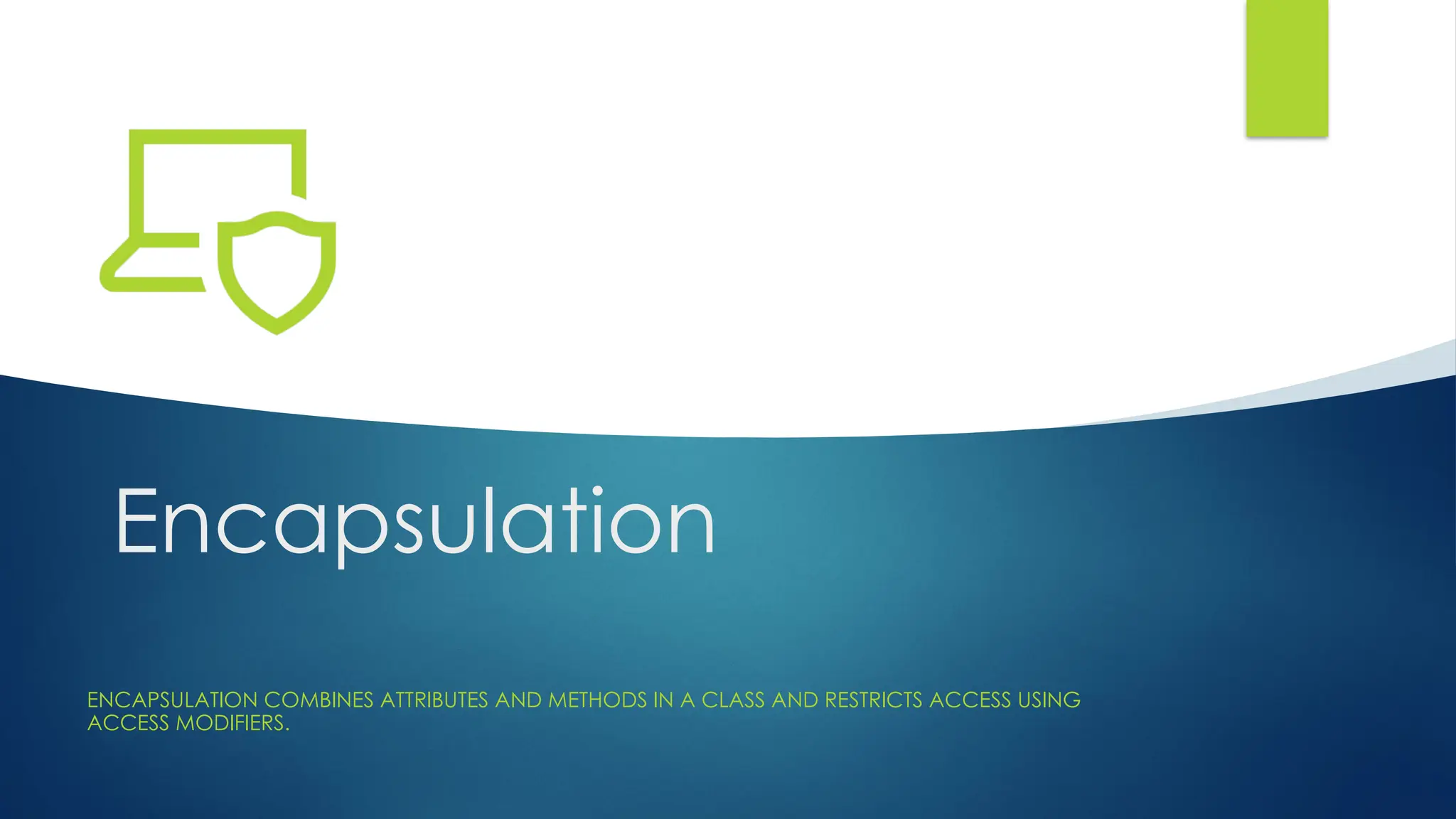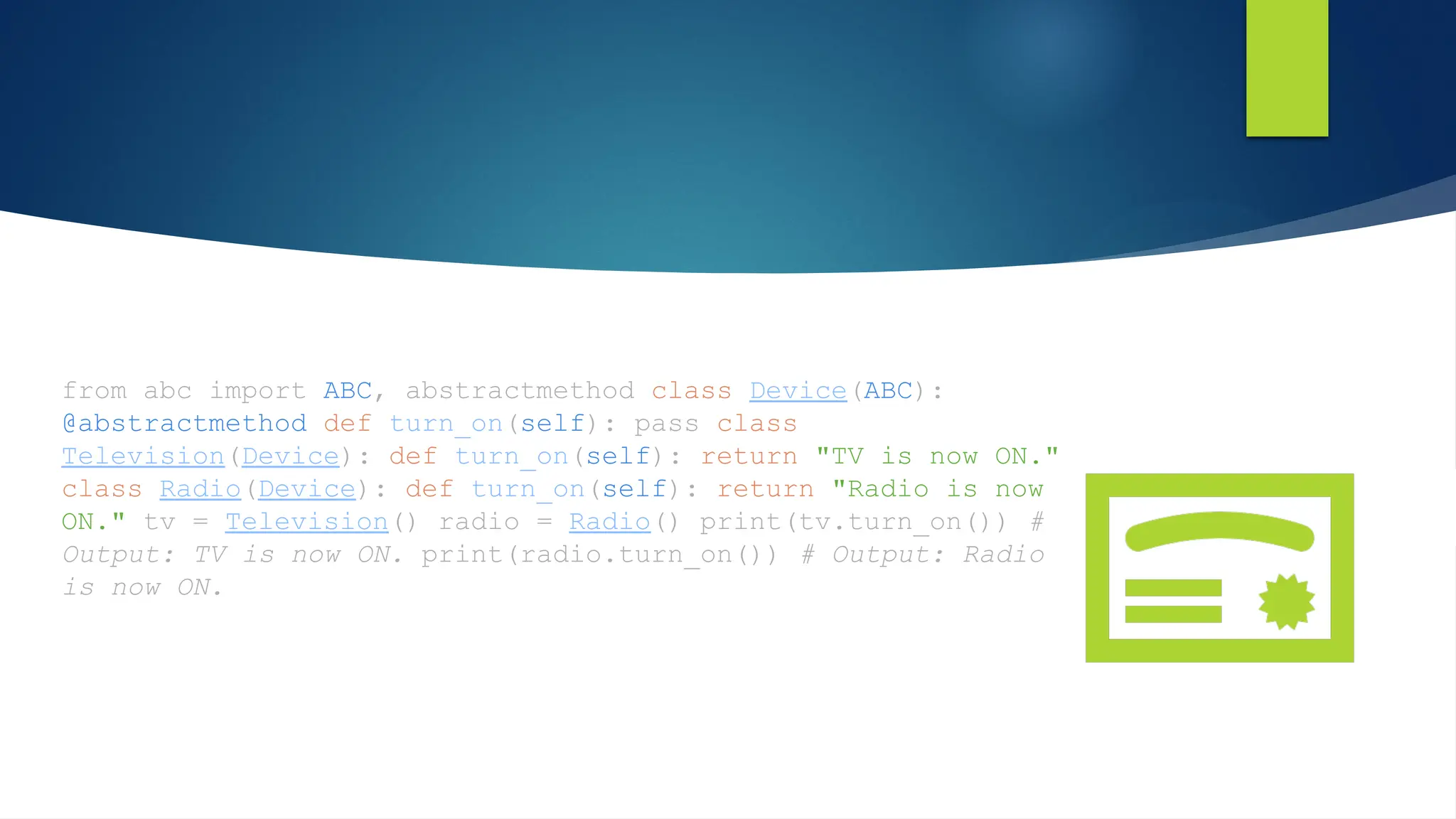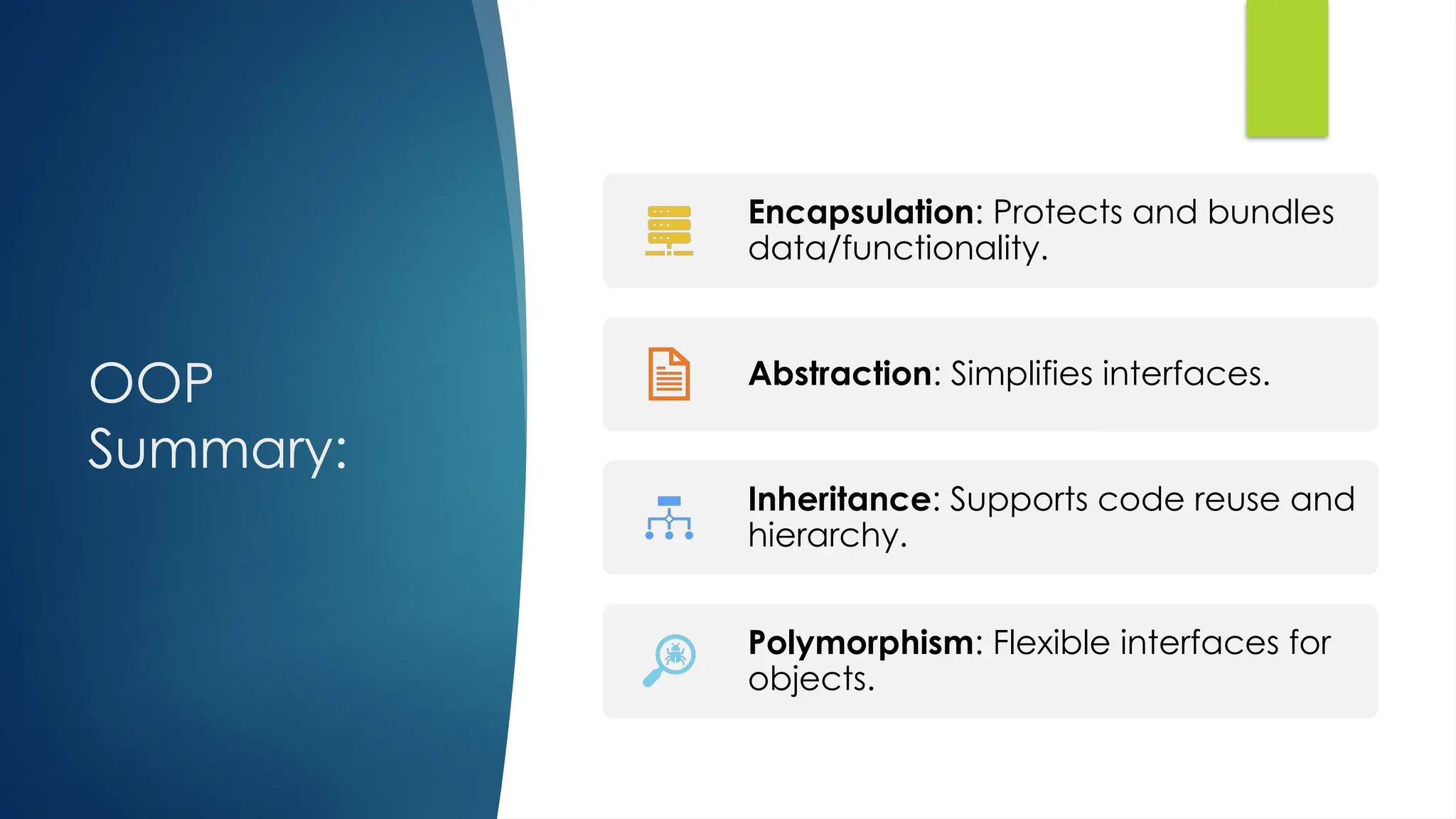The document provides an overview of object-oriented programming (OOP) in Python, detailing its key features such as encapsulation, abstraction, inheritance, and polymorphism. It explains the concepts of classes and objects, providing syntax and examples for each OOP principle. Additionally, it includes code snippets to illustrate these concepts, emphasizing their practical applications in programming.


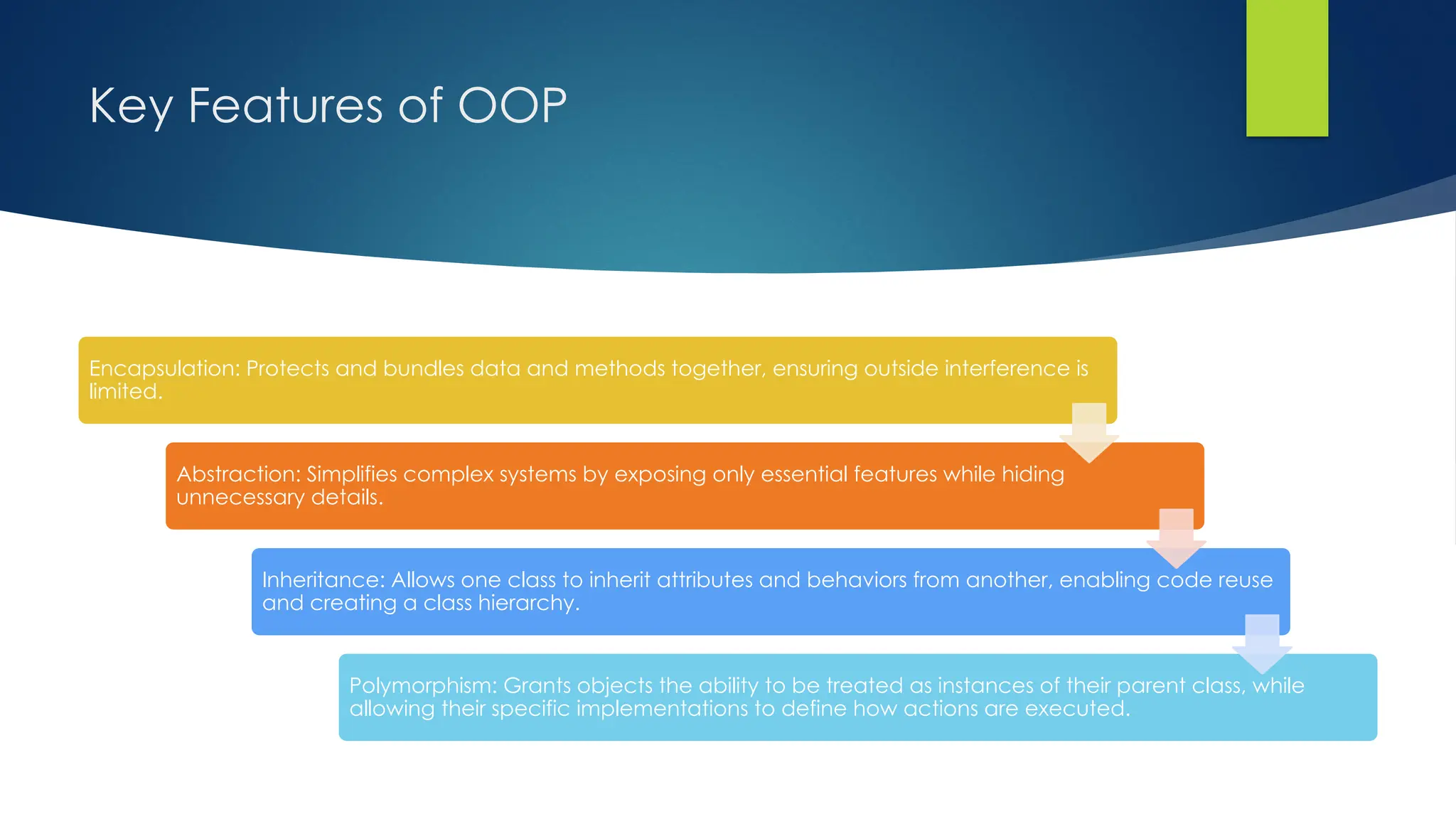
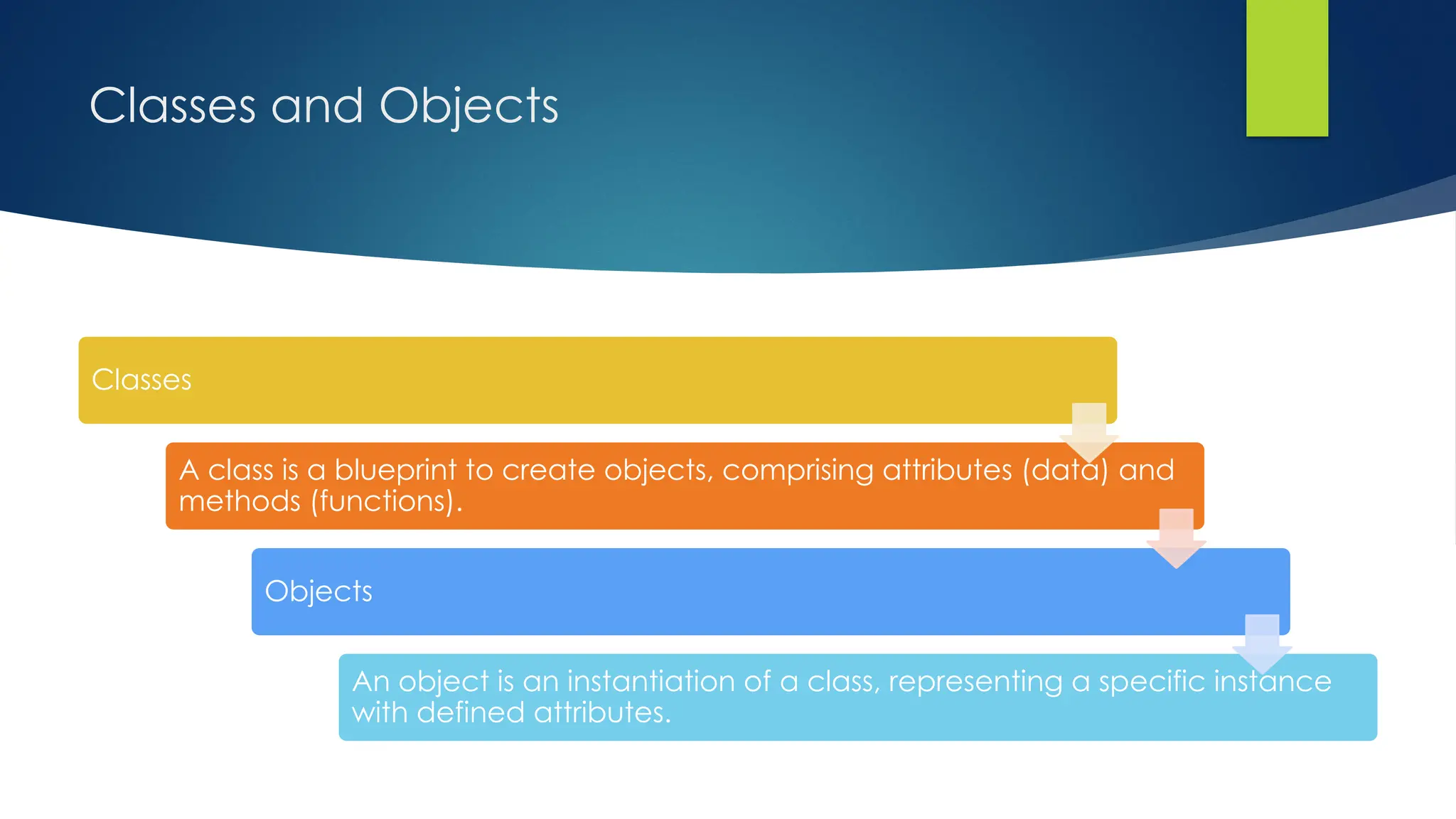

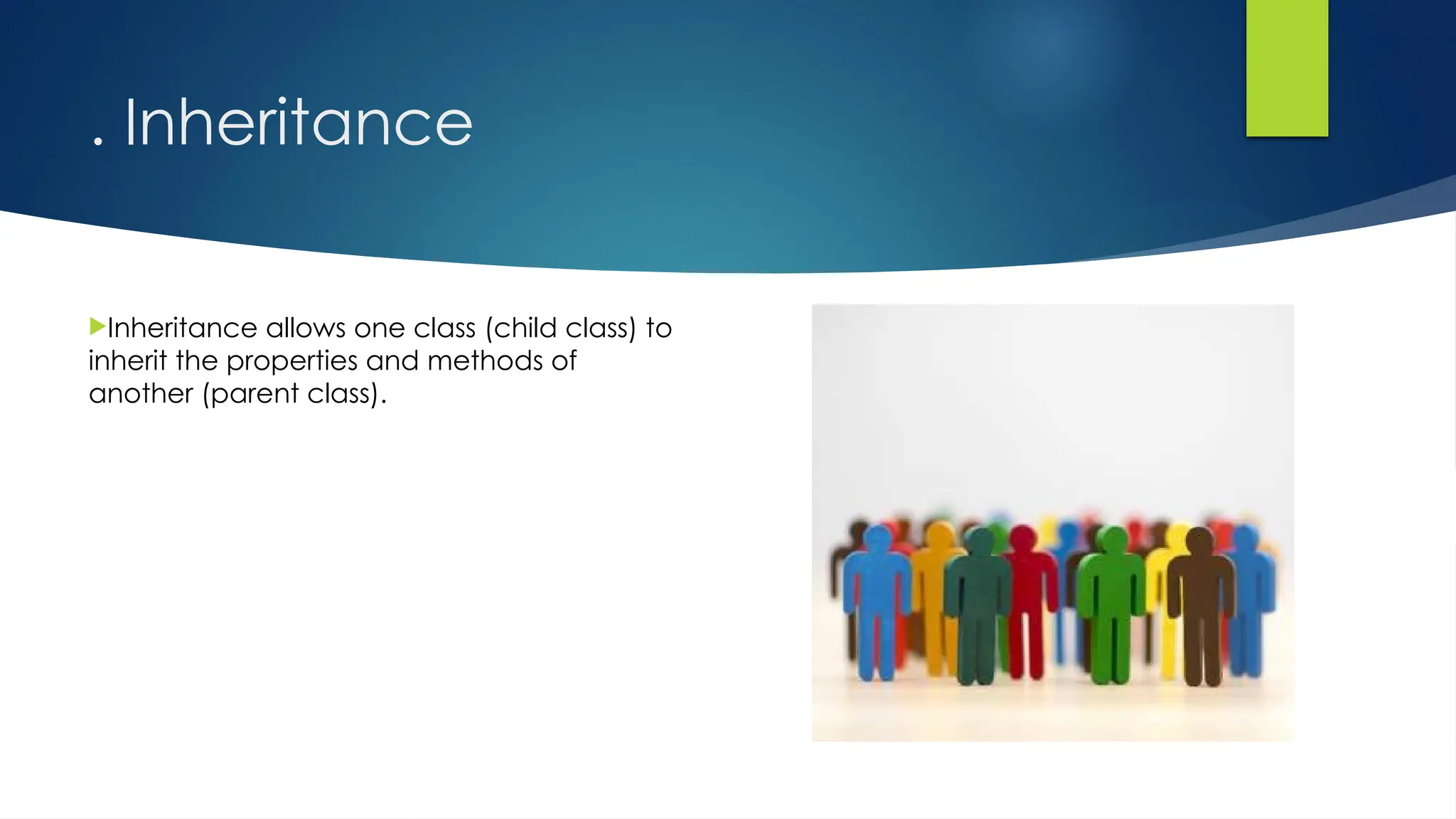
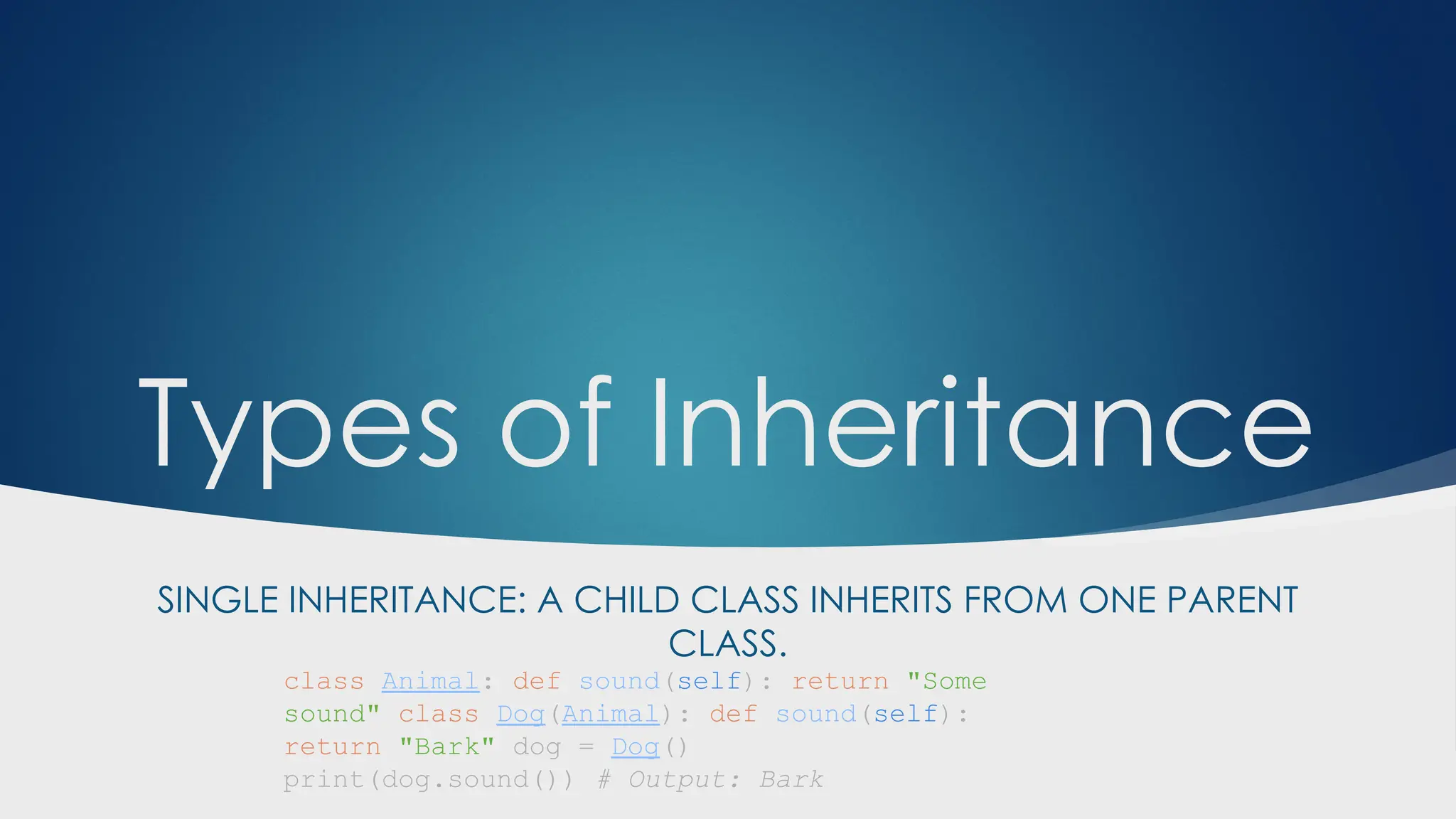

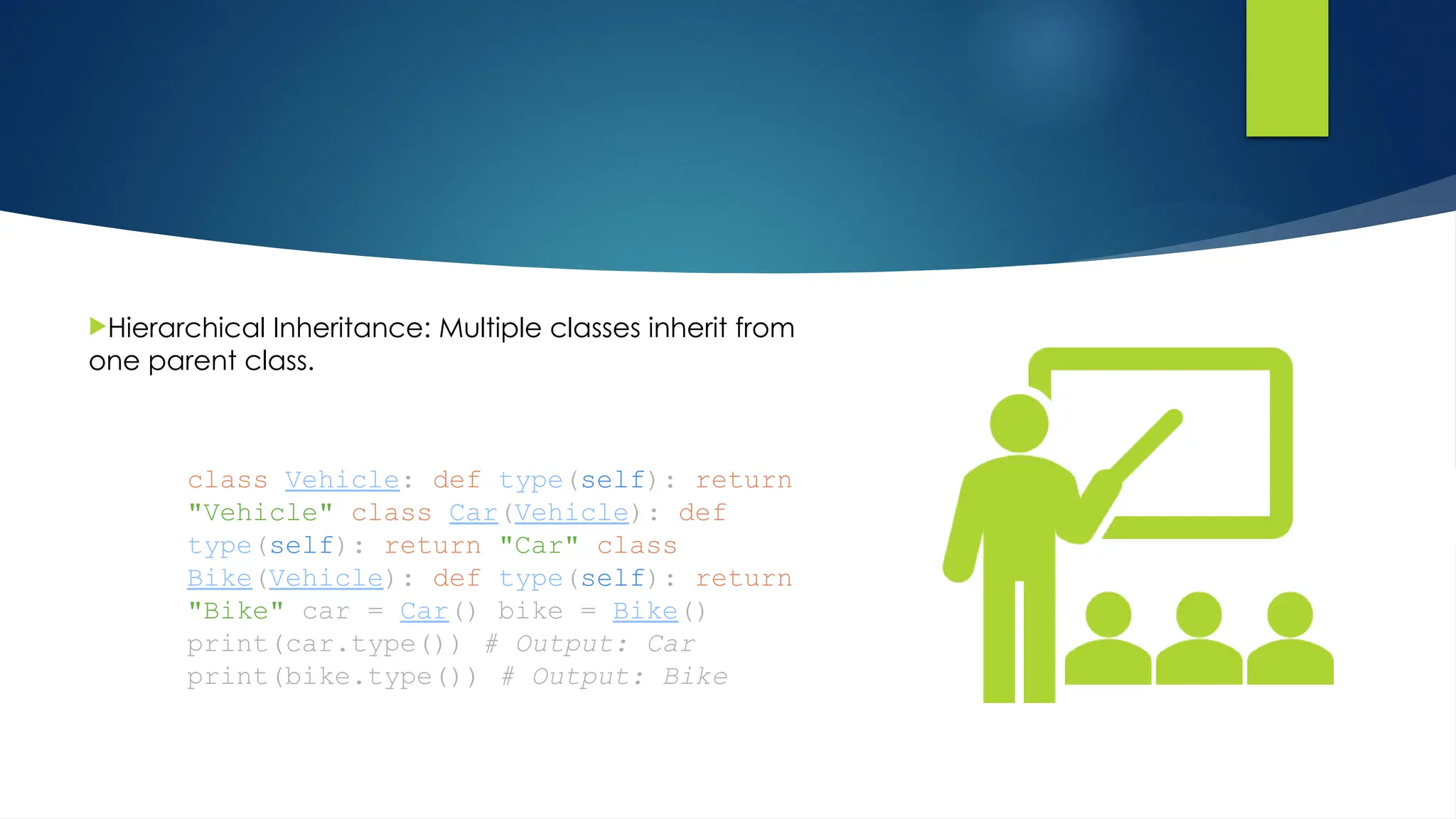
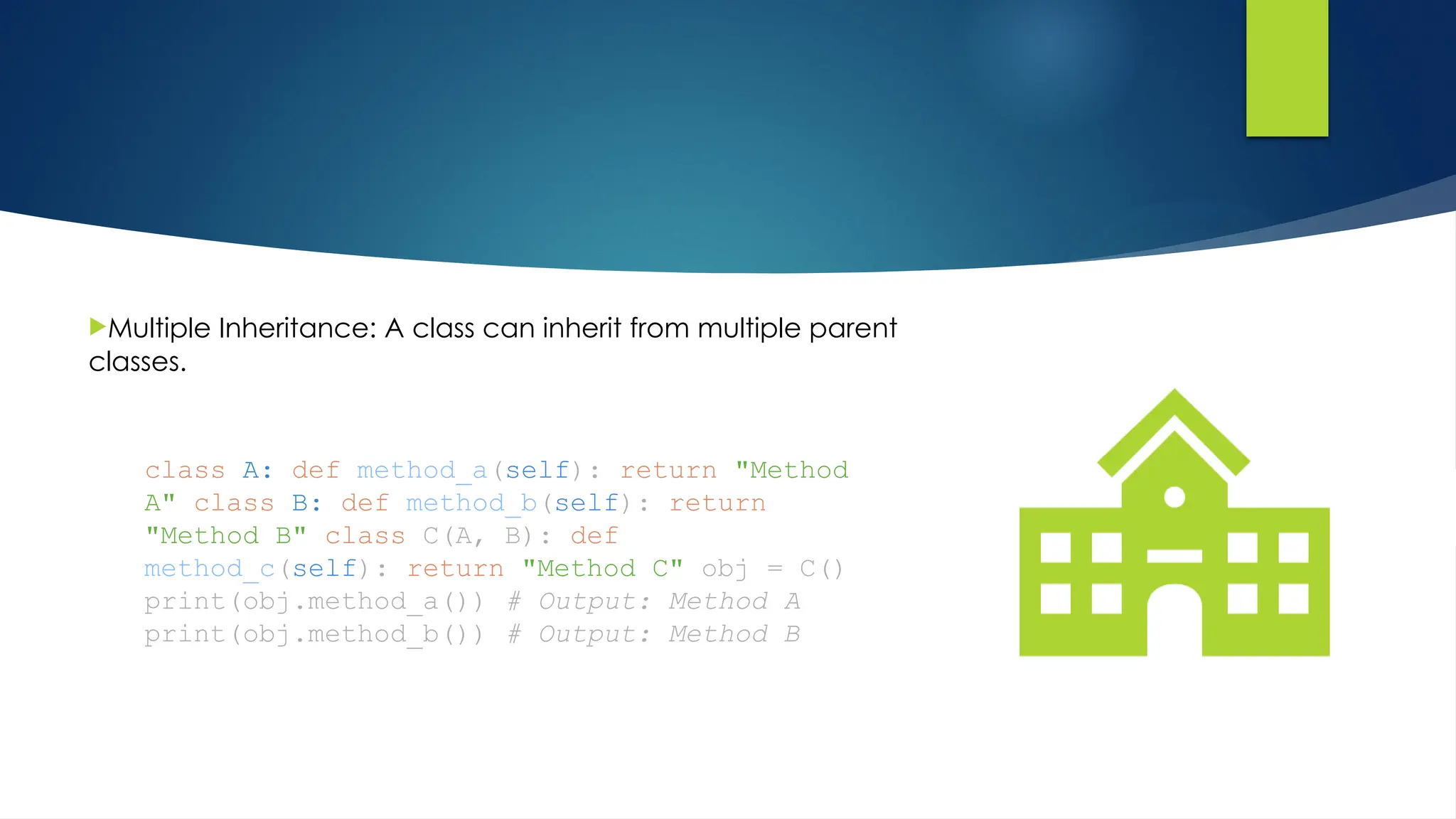
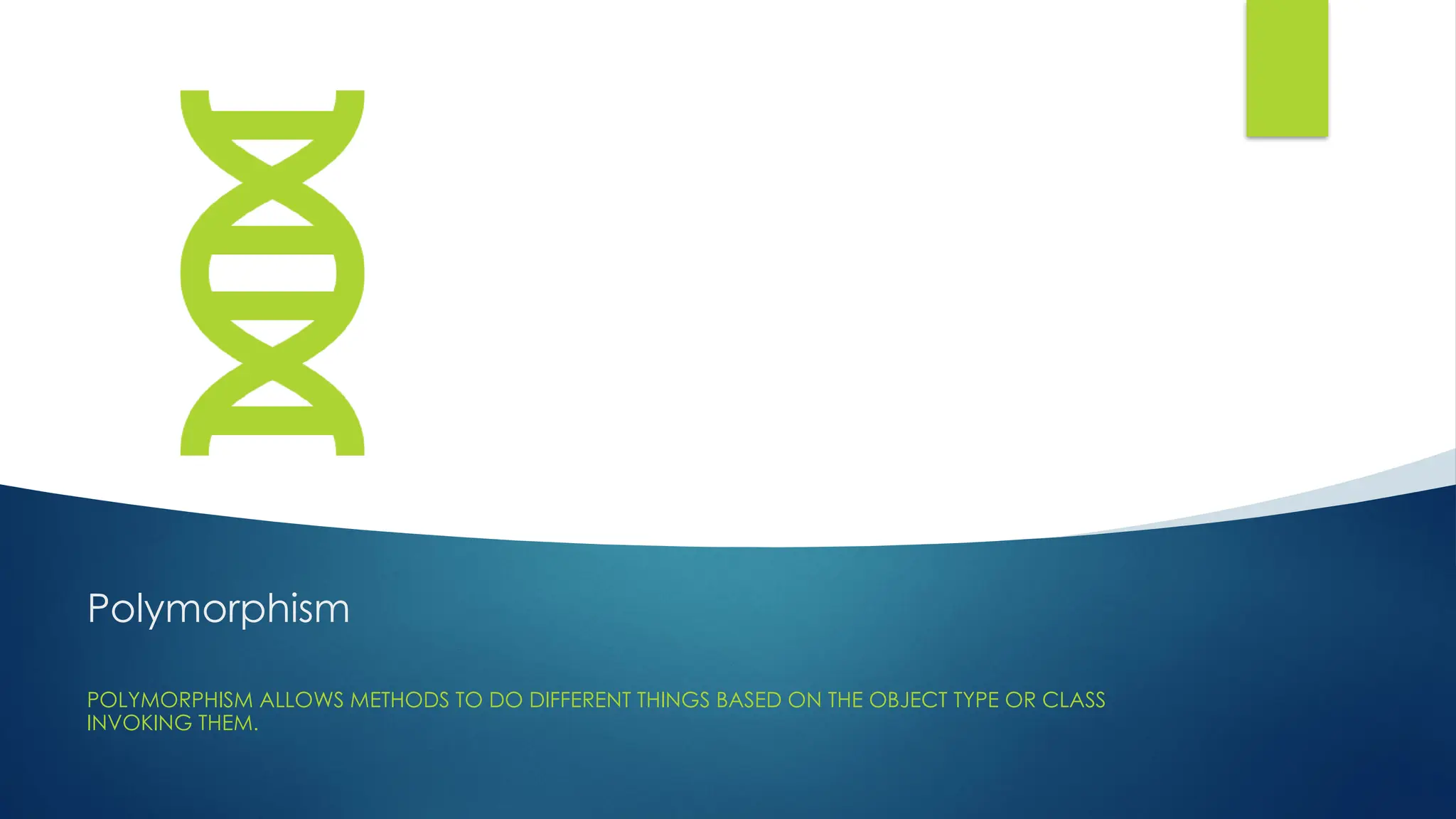
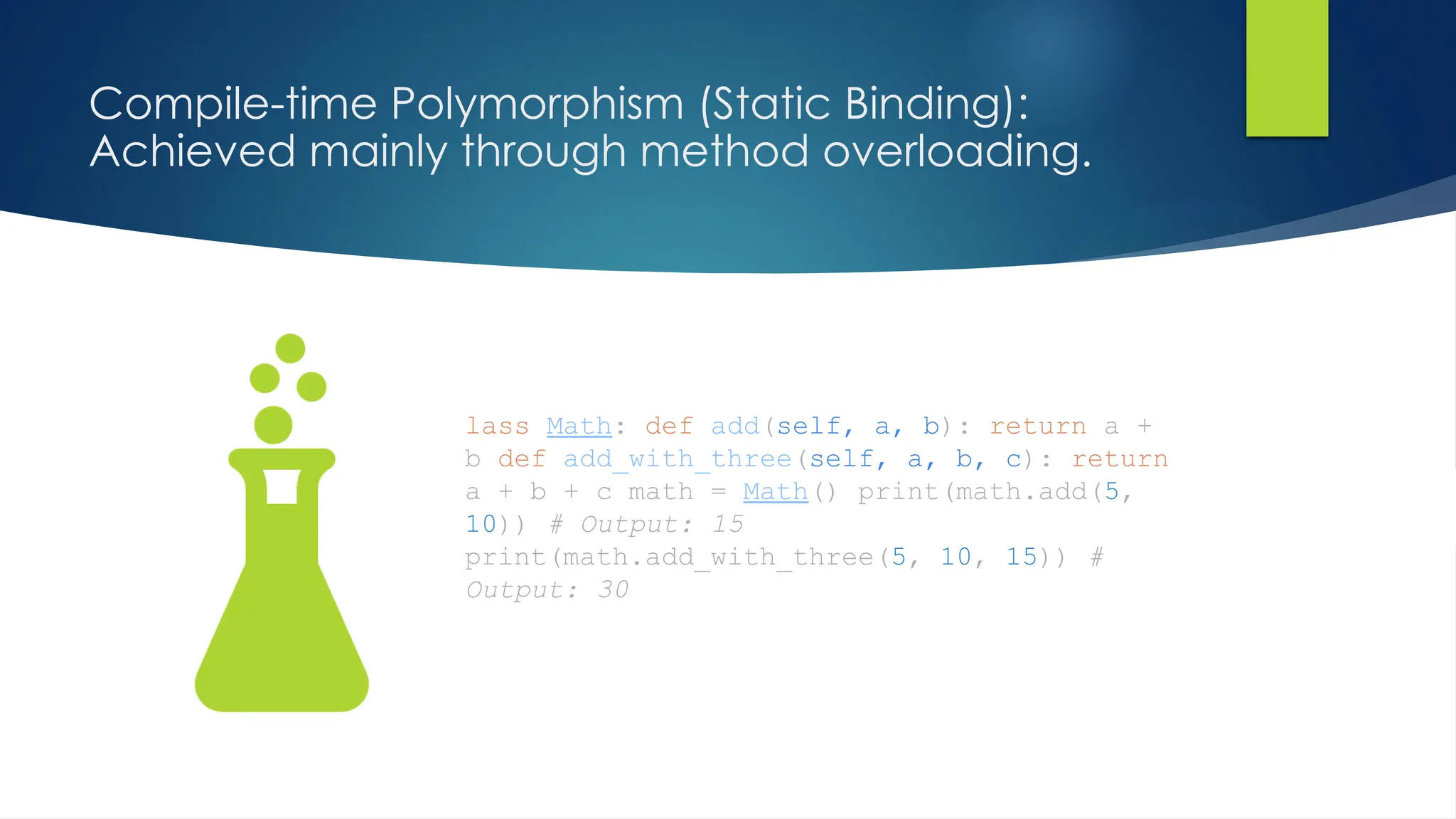
![Run-time Polymorphism (Dynamic Binding): Achieved through method overriding. lass Shape: def area(self): pass class Rectangle(Shape): def __init__(self, length, width): self.length = length self.width = width def area(self): return self.length * self.width class Circle(Shape): def __init__(self, radius): self.radius = radius def area(self): return 3.14 * (self.radius**2) shapes = [Rectangle(10, 5), Circle(7)] for shape in shapes: print(shape.area()) # Output: 50, 153.86](https://image.slidesharecdn.com/object-orientedprogrammingoopinpython-241221171546-77b74839/75/Object-Oriented-Programming-OO-in-pythonP-in-python-pptx-13-2048.jpg)
